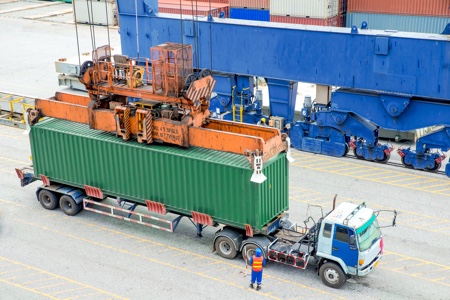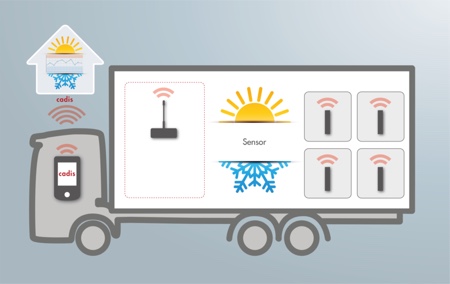Good logistics are key to all pharmaceutical manufacturers to ensure that their customers have a continuous supply of drugs from suppliers and distributors in different locations but also for the complete management of the way in which resources such as raw materials and packaging are acquired, stored and moved to different locations. Increased globalisation of companies and new emerging markets have seen the value of the pharmaceutical logistics market double over the past decade and its growth is likely to continue.
Market research analyst TechNavio forecasts a compound annual growth rate (CAGR) of 9.71% for the global pharmaceutical logistics market over the period 2014-2019.1 While the pharmaceutical logistics market in North America is predicted to increase at a CAGR of more than 8% from 2015-2019, some regions are expected to grow even faster. Asia and South America in particular are becoming increasingly attractive. Research and Markets forecasts that the Asia-Pacific pharmaceutical logistics market will grow at a CAGR of 10.45% over the period 2014–2019.2 However, these regions are also regarded as some of the most challenging in supply-chain terms.
The current distribution structure in the European market leans heavily towards national warehouses, both centrally and regionally, says global transport and logistics provider DSV.3 Developing warehousing structures is a major focus area for the pharmaceutical industry and outsourcing to logistics service providers is on the increase.
Outsourcing allows companies to improve both consistency and efficiency across the international supply chain network but, in turn, logistical suppliers must be able to provide secure, reliable, high quality services that comply with the regulatory requirements of each region.
Logistics companies that are opening new dedicated pharma and life science facilities at airport and transport hubs in Europe include Yusen Logistics and MNX Global Logistics; both have opened facilities at Amsterdam Schiphol airport, while Alpha Industrial is building a specialised logistics facility in Biebesheim am Rhein, Germany.
Regulatory change has increased the need for supply chain security and thus the requirement for track and trace solutions
Several other business trends are having an impact on the global pharmaceutical logistics sector. For example, the shift toward the use of biological drugs is creating new market growth. TechNavio’s analysts forecast that the global biopharma logistics market will grow at a CAGR of 3.91% over the period 2014–2019. Looking even further ahead with the evolution of personalised medicine, Frost & Sullivan forecasts that the stem cell therapy market will be worth $40bn by 2020 and $180bn by 2030. This new sector will require further specialised packaging and instrumentation, and will increase demand for small payload shipping containers and related temperature monitoring and location tracking devices.
Other trends affecting pharma logistics are the introduction of new methods of delivery for pharmaceutical products using online services, and the rising demand for home healthcare services.
Regulatory change has also increased the need for supply chain security and thus the requirement for track and trace solutions to ensure that products are not subject to tampering, adulteration or theft.
Clinical trial materials provide yet another logistics challenge as this sector can involve small shipments to patient facilities, even patient homes, located across the globe. Marken, a specialist in direct-to-patient shipments for the pharmaceutical industry, says patient recruitment and retention are two of the biggest challenges in clinical trials. It adds that bringing the trial to the home increases patients’ willingness to participate and may provide better patient retention and compliance. Patients who face travel restrictions or those who suffer from illnesses that prevent travel may find themselves better placed to participate and remain enrolled in a clinical trial.
Increasingly, the sector is involved in the delivery of temperature-, moisture- and time-sensitive products. The various modes of refrigerated ships, containers, trucks and cars employed are using a range of cooling agents, including – dry ice, liquid nitrogen and gel packs. Major players in this logistics sector include DHL, FedEx, Kuehne and Nagel, LifeConEx, Continental Air Cargo, United Parcel Service, DB Schenker, and World Courier.

In June, the World Health Organisation (WHO) published new guidance for the storage and transport of pharmaceutical products. This was presented in the Report of the 49th meeting of the WHO Expert Committee on Specifications for Pharmaceutical Preparations. The report is available in the WHO Technical Report Series (No. 992), and the various supplements provide model guidance for the storage and transport of time- and temperature-sensitive pharmaceutical products.4
The document is designed to give an overview of the major aspects of good storage and distribution practice for time- and temperature-sensitive pharmaceutical products (TTSPPs). It includes references to requirements that can be found in general guides to good manufacturing practice (GMP), good storage practice (GSP) and good distribution practice (GDP).The purpose is to ensure that the reader is aware of the relevant GMP, GSP and GDP implications of TTSPP management.
What could possibly go wrong?
With the preferable temperature for pharmaceutical products lying within the 2°–8°C range, drugs that are inadvertently stored or transported in the wrong conditions may produce an adverse reaction if used by the patient, or may lose their effectiveness. Changes to set-point temperatures can happen anywhere along the supply chain. ZIM Integrated Shipping highlights just a few possibilities: a malfunction of the refrigeration system, power cuts, generators that do not kick in, shifting of containers that leave some disconnected, or a technician who inadvertently modifies the set point. Such events could effectively ruin entire consignments.
Simply leaving a container’s door open for a prolonged period may be damaging to sensitive cargo, as are high levels of radiation or humidity
Furthermore, deviations from the planned route where a driver may be forced to prolong the journey beyond schedule, an accident on the road, or even a stop that takes longer than originally planned can be detrimental to medications. Simply leaving a container’s door open for a prolonged period may be damaging to sensitive cargo, as are high levels of radiation or humidity.
Recognising that the cold chain has many risk points, ZIM offers ZiMonitor, a real-time service from origin to destination to give customers peace of mind. Equipped with a GPS that monitors route deviations and a computer that controls temperature and humidity at all times, workers on the ground and at a call centre operating 24/7 receive SMS or email alerts when a technical issue or human error puts cargo at risk.
Also active in the monitoring area, Kratzer Automation offers a solution by placing UHF-enabled temperature sensors in a vehicle, trailer, container or at item/package level. A driver equipped with a mobile device and the dispatching team back at the depot each have access to recorded temperature data in real time and it can also be made available to customers online. The system is able to prove that the cold chain has been monitored seamlessly throughout the entire transportation process.
‘Until now continuous monitoring of temperature-controlled transport has been a major headache, particularly for companies in the food and pharmaceutical industries,’ says David Burder, UK Country Manger, Kratzer Automation. ‘Random temperature checks can only ever provide a snapshot and temperature-sensitive warning labels show if the temperature falls above or below a required range, but offer no scope to take preventative action before a breach occurs.’

Kratzer Automation offers real time monitoring in vehicles at item/package level
Using the company’s operational transport management system – cadis – and a new temperature monitoring module, the status of refrigerated vehicles can be tracked at a glance and different temperature zones within a vehicle can be monitored. If the temperature of a shipment reaches a critical level an alert to the dispatcher and driver can be triggered, enabling corrective action to be taken in time to prevent any shipment loss. Because one single transport information system manages temperature data, shipment information and customer data in real time, the system avoids the need to synchronise data from different sources.
In future, such solutions will undoubtedly proliferate and will be refined, giving both the pharmaceutical sector and logistics providers greater visibility over the whole supply chain.
References
1. http://www.reportlinker.com/p02840437-summary/view-report.html
2. http://www.researchandmarkets.com/research/ d3tsnf/pharmaceutical
3. http://www.ie.dsv.com/Market-Monitor/The-Current-State-of-Pharmaceutical-Logistics#sthash.oes2zaGS.dpuf
4. http://apps.who.int/prequal/info_general/documents/TRS961/TRS961_Annex9.pdf




